Materials for the kitchen: what are there and what is better to choose?
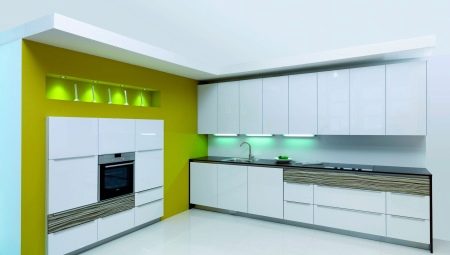
The kitchen is a place where not only food is prepared, but a cozy atmosphere conducive to sincere conversations. And the first thing that affects the surroundings is the kitchen set. Its appearance, functionality, ergonomics and practicality contribute to the creation of a favorable microclimate. To feel comfortable in your own kitchen, you don't have to invest a lot of money in renovations and furniture. You can create a comfortable environment even with a modest budget. The main thing is to know what materials to choose, because expensive is not always of high quality. Here we will figure it out.
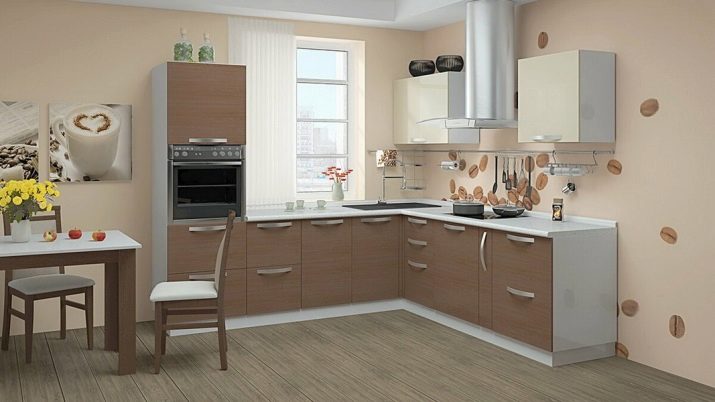
General requirements
When ordering or buying ready-made kitchen furniture you should take into account such nuances as:
- the kitchen set should harmoniously fit into the interior of the room in terms of color and style of execution;
- if you plan to buy furniture of more than one color, then it is preferable to install light facades at the top, and dark ones at the bottom;
- quality materials for the kitchen at affordable prices can be selected by contacting several companies and compare prices;
- custom-made furniture always justifies the costs, because even in a standard room, each apartment has something individual.
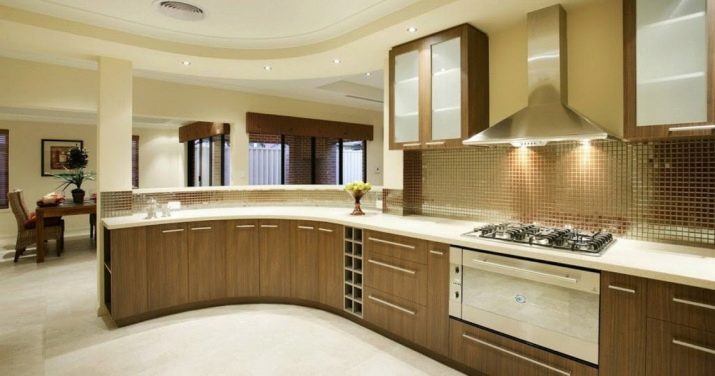


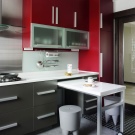
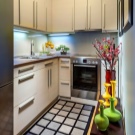
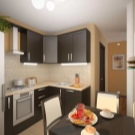
What are the housings made of?
The largest amount of material is consumed for the manufacture of the body of kitchen furniture, therefore, the price of the headset will directly depend on the choice of the buyer. It is to the body that all devices and mechanisms are attached, its strength affects the service life of the kitchen. Each type of raw material has its pros and cons and you need to know them.
- Chipboard Is small wood chips mixed with resin, pressed into a board in an extruder and covered with a protective film. The advantages include the availability and rather low price of the product. The downside is the loose texture of the board. Initially, all the parts are securely screwed on and are in place, but if used carelessly, the doors loosen. Re-pinning elements to the same location can be problematic. With each new screwing, the chips become looser and lose their density.
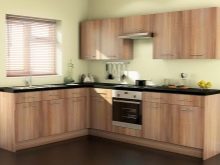
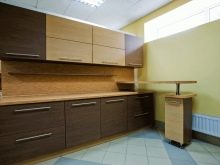
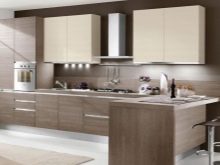
And you also need to take into account one more nuance - chipboard is afraid of water and even high humidity. The material swells, delaminates and loses its attractive appearance.
- MDF - a board made of wood-fiber raw materials is an environmentally friendly and safe product, since toxic adhesive mixtures are not used in its production. The material is made by hot pressing, during which a natural substance, lignin, is released from small chips. The result is a durable product that is easy to process and decorate. Advantages of the MDF kitchen furniture body are durability, resistance to high temperatures. It is safe and environmentally friendly, low susceptibility to fungi and mold. It belongs to the middle price category. The disadvantages include poor moisture resistance.
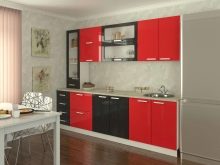
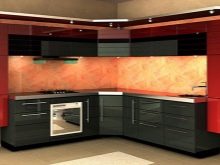
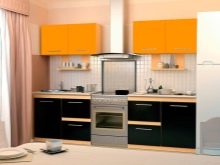
Accidental contact with water is not dangerous, but with frequent and prolonged contact with moisture, MDF will swell and deform.
- Wooden case - this is plywood or blockboard. An ordinary plywood surface is environmentally friendly, durable, affordable and reliable. The advantage of waterproof plywood, in addition to all of the above, is the ability to survive a flood without changing its original shape. A blockboard has similar characteristics. If there is no water-repellent impregnation, then humidity is enemy number one. Another weak point of the wooden case is that it must be painted.
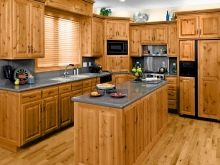
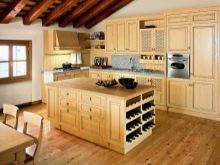
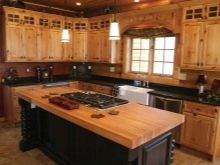
Facade options
The facade of the kitchen unit is his face. It can be done in the following ways:
- smooth;
- frame rounded;
- frame rectangular.


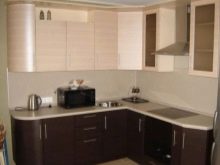
The resources for their production, presented on the furniture market, allow you to choose modifications for every taste and wallet. They all have different characteristics and external data. Facade panels are made from several materials.
- Chipboard and chipboard. The most budget option, but not the worst. It is easy to process, which makes it possible to combine it with other materials for decorative finishing.
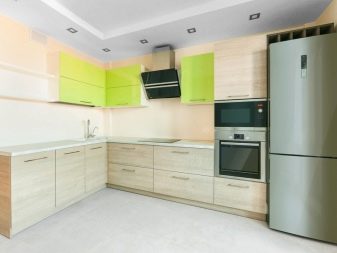

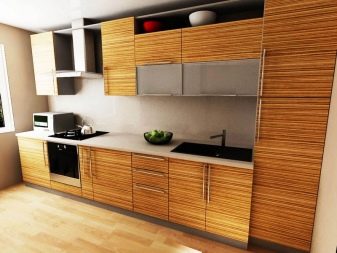
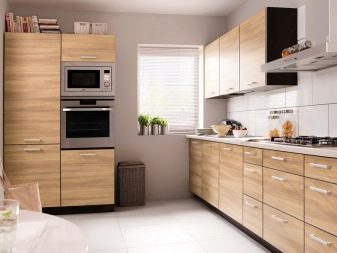
- MDF. For front elements, it is used film or painted. Vinyl film makes it matte, glossy or multi-colored, but it can peel off over time or when exposed to high temperatures. With paint, in particular acrylic, this does not happen - it is more reliable and more durable, but the price, respectively, is higher.
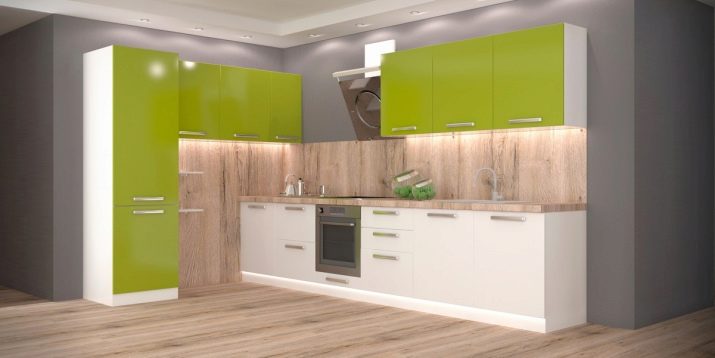
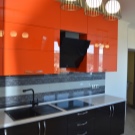

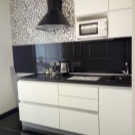
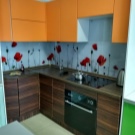
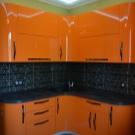
- Postforming. This material is created by rolling a layer of plastic onto a chipboard or MDF sheet. The coating is not afraid of high temperatures and mechanical stress. This material has the widest color palette, even the most picky buyer can choose a shade to their liking.

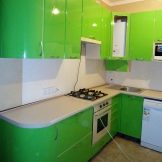

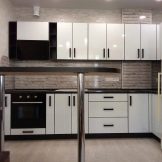
- AGT plate. Factory plastic cladding of MDF sheets allows to achieve strength, and the side edging reliably protects the facade from the influence of negative factors.

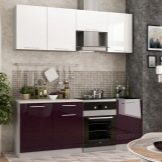

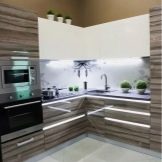
- Veneer. Such panels look like wood, but in fact it is a chipboard or MDF board, covered with a thin sheet of natural wood.
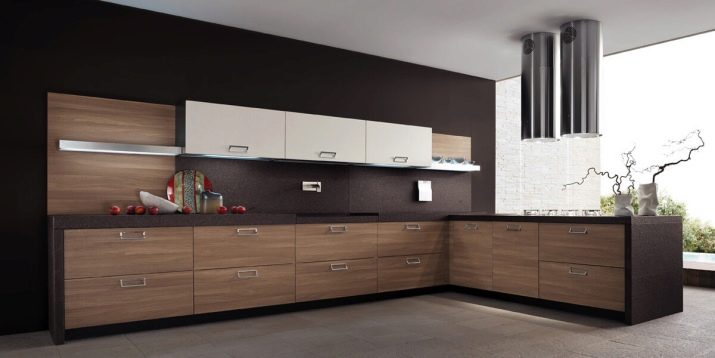
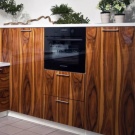
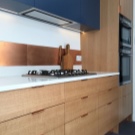
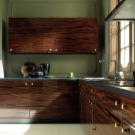
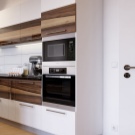
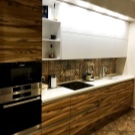
- Wooden array. Natural wood is decorated with carvings and varnished. In addition to the fact that such a facade has a gorgeous look, it will last a very long time, and its cost is also decent.
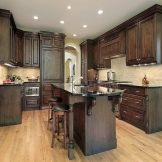
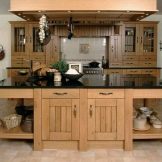
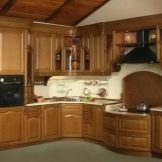
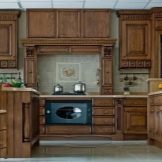
Glass inserts of various shades and textures are often installed on the doors. Furniture for the kitchen with type-setting and combined facades is less popular, but it is also there. It is extremely rare that kitchens are made of metal, concrete, glass. Such models are considered exclusive and are made only to order.
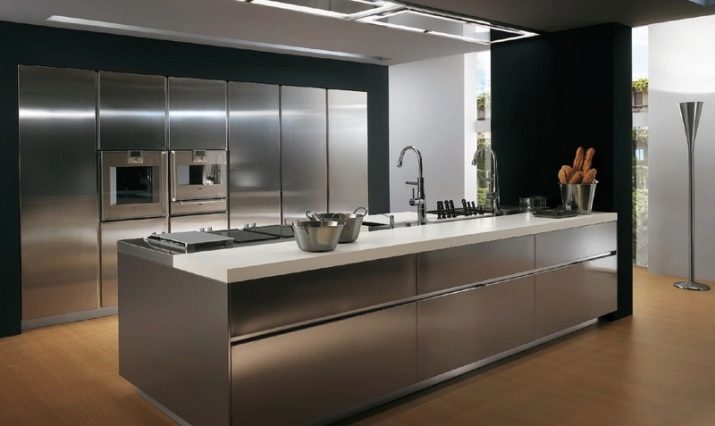
Varieties of countertops
The standard thickness of the tabletop is 28 mm, but if the headset has built-in appliances, then you will have to add another 10 mm. It is this surface that is subjected to the greatest mechanical stress, therefore it must be made of the most durable material. The work surfaces of the kitchen set are made from various raw materials, this list also includes chipboard and MDF. A board of the appropriate thickness is taken as a base, and covered with laminated plastic on top. Such a tabletop is durable, waterproof, easy to attach and, if necessary, can be changed to another.

But at the same time, the plastic covering the panel must not be exposed to high temperatures, abrasive detergents and chemicals, as well as the ingress of water into leaking table joints.
Artificial stone surfaces
Acrylic table top pleasant to the touch, while looking great in both glossy and matte versions. Its main advantage is plasticity. A designer can bring to life the most extravagant idea with this material. Intricate curves and unusual shapes of kitchen acrylic surfaces will delight lovers of originality. The convenience of using acrylic as a working panel is the ability to eliminate small chips and scratches by grinding. After this procedure, the plane of the countertop takes on its original appearance. Contact with pigments can leave marks on the light-colored acrylic surface. Water is not dangerous for her.

It should be remembered that the material is not heat-resistant.
Quartz agglomerate - it consists of natural quartz chips and synthetic resin that binds it. In appearance, it is in no way inferior to natural stone, and with the addition of a coloring pigment, it can be presented in various colors. The material has increased resistance to the formation of microcracks, does not need special care, and is in no way inferior in strength to granite.
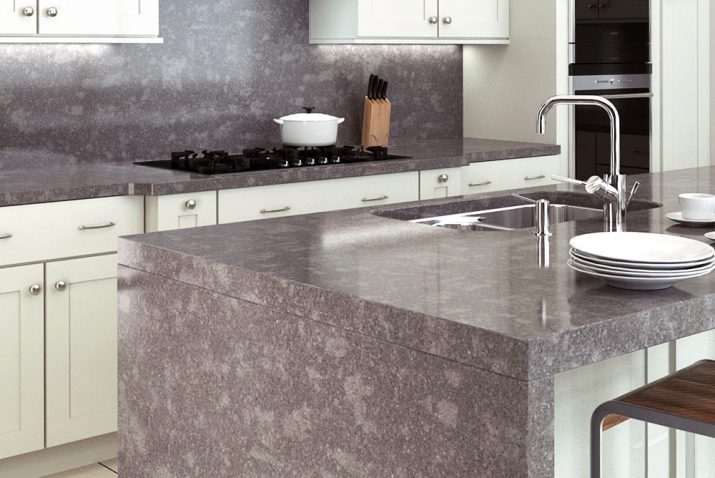
Porcelain stoneware - a fairly new composite material with increased strength, durability and other qualities that are inherent in the kitchen work area. On the building materials market, it is presented in various colors, imitating concrete or natural stone. The disadvantage of porcelain stoneware countertops is the complexity of the restoration. If damaged, it may be easier to replace the entire panel than to dismantle and send it in for repair.
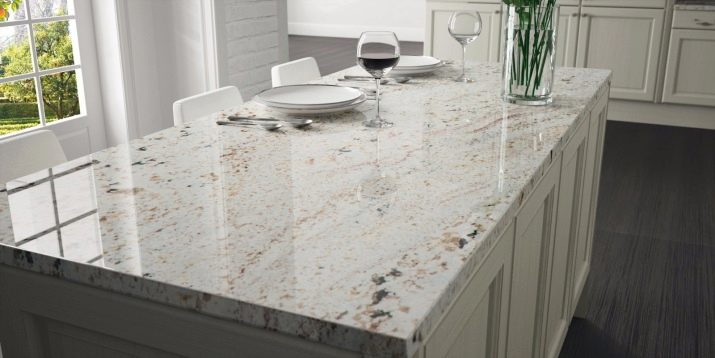
Natural stone countertops
Marble Is a beautiful and attractive material that is suitable for any style of kitchen interior. However, its practicality leaves much to be desired. Despite the fact that it is a natural stone, it is quite fragile and has a porous structure. This means that even spilled coffee or juice will leave a mark on the countertop. The surface can be sanded, but this procedure is expensive. Before choosing a granite surface for a kitchen table, you need to make sure that there is no radioactive background of this mineral. This surface is not afraid of either hot pots, or high humidity, or microorganisms, or fungus. The color and texture retain their original appearance even after decades.

The only nuance that should be taken into account is the large weight of the granite surface. This should not be forgotten when designing its supporting structures.
Selection recommendations
Buying new kitchen furniture is usually accompanied by renovations. You need to plan and order a kitchen set before starting the renovation of the room, in extreme cases, during it. Otherwise, it will be difficult, and sometimes impossible, to realize all the wishes. A pre-purchased sink, stove or extractor hood can limit the functionality of kitchen furniture, not fitting into the built-in structure.
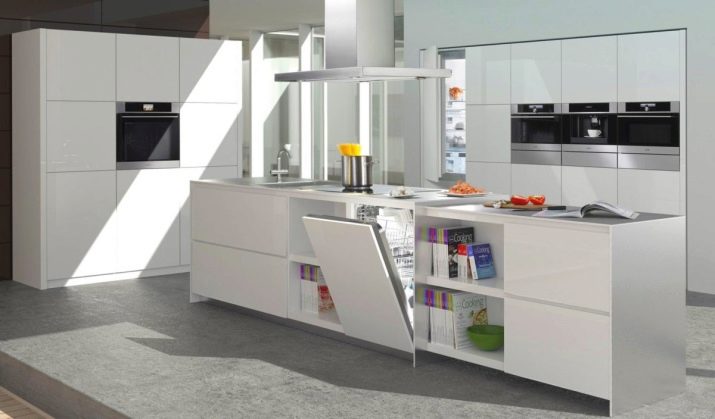
It will be easier to choose the material of the kitchen from a variety of proposals by comparing several similar options.
As strange as it may sound, the most practical of all the variety of models will be a white, glossy kitchen set. It will be invisible to fingerprints and water droplets. All dirt is easily removed, the furniture shines clean again. But the bright white color has its drawback: when exposed to direct sunlight, the kitchen becomes yellowish. Therefore, if the shade is not fundamental, you can take beige or ivory.
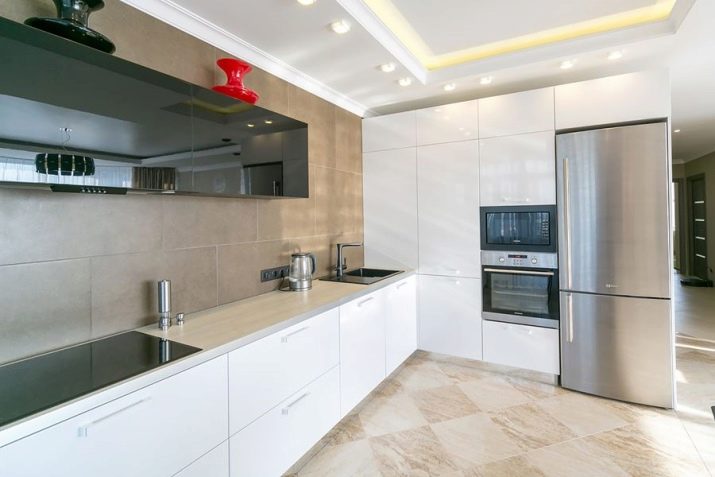
For lovers of dark shades, there is also a way out - to choose a surface with a rough texture or with a wood-like pattern. The uneven relief of the façade is less susceptible to contamination, but more difficult to maintain. If, nevertheless, the choice fell on a kitchen made of chipboard, then its environmental friendliness class should be E-1. It is advisable to make facades of it in dark shades, since a black stripe cannot be avoided at the edge joining. All ends of the surfaces should be covered with PVC film, which is necessary for the safety and prolongation of the life of the furniture.

For a creative and creative approach to kitchen design, MDF would be the best option. Its variety of colors, textures and finishes is simply amazing. Open shelves are, of course, saving on facade material, but a very impractical thing. Over time, they turn into a repository of dusty and unnecessary things. But if you really want to save on something, then you can do it on fittings, equipping all drawers with sliding devices, and cabinet doors with lifting mechanisms. It is very trendy and modern.
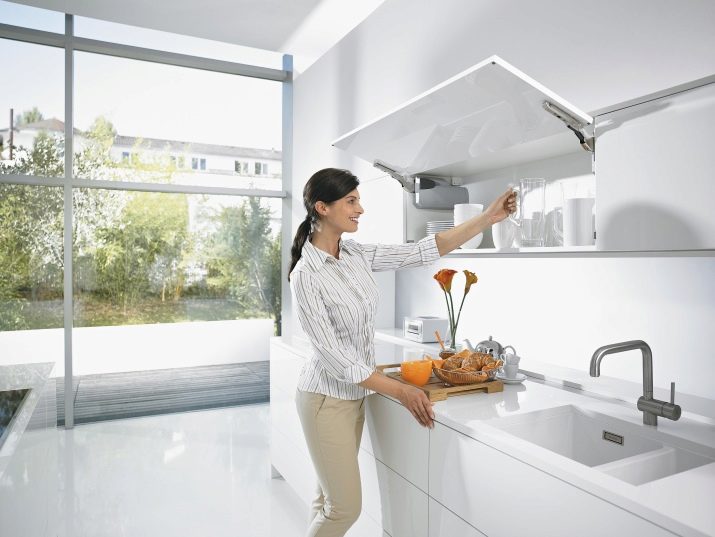
For information on what material to choose for the kitchen facade, see the next video.








